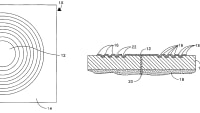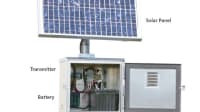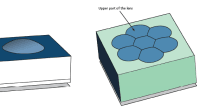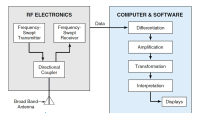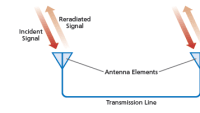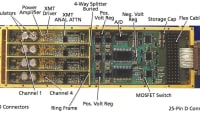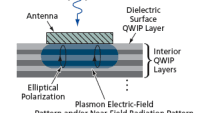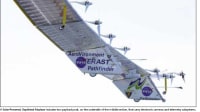The Juno mission to Jupiter requires an antenna with a torus-shaped antenna pattern with approximately 6 dBic gain and circular polarization over the Deep Space Network (DSN) 7-GHz transmit frequency and the 8-GHz receive frequency. Given the large distances that accumulate en-route to Jupiter and the limited power afforded by the solar-powered vehicle, this toroidal low-gain antenna requires as much gain as possible while maintaining a beam width that could facilitate a ±10° edge of coverage.
The natural antenna that produces a toroidal antenna pattern is the dipole, but the limited ≈2.2 dB peak gain would be insufficient. Here a shaped variation of the standard bicone antenna is proposed that could achieve the required gains and bandwidths while maintaining a size that was not excessive. The final geometry that was settled on consisted of a corrugated, shaped bicone, which is fed by a WR112 waveguide- to-coaxial-waveguide transition. This toroidal low-gain antenna (TLGA) geometry produced the requisite gain, moderate sidelobes, and the torusshaped antenna pattern while maintaining a very good match over the entire required frequency range. Its “horn” geometry is also low-loss and capable of handling higher powers with large margins against multipactor breakdown. The final requirement for the antenna was to link with the DSN with circular polarization. A four-layer meander-line array polarizer was implemented; an approach that was fairly well suited to the TLGA geometry.
The principal development of this work was to adapt the standard linear bicone such that its aperture could be increased in order to increase the available gain of the antenna. As one increases the aperture of a standard bicone, the phase variation across the aperture begins to increase, so the larger the aperture becomes, the greater the phase variation. In order to maximize the gain from any aperture antenna, the phase should be kept as uniform as possible. Thus, as the standard bicone’s aperture increases, the gain increase becomes less until one reaches a point of diminishing returns.
In order to overcome this problem, a shaped aperture is used. Rather than the standard linear bicone, a parabolic bicone was found to reduce the amount of phase variation as the aperture increases. In fact, the phase variation is half of the standard linear bicone, which leads to higher gain with smaller aperture sizes. The antenna pattern radiated from this parabolic-shaped bicone antenna has fairly high side lobes. The Juno project requested that these sidelobes be minimized. This was accomplished by adding corrugations to the parabolic shape. This corrugated-shaped bicone antenna had reasonably low sidelobes, and the appropriate gain and beamwidth to meet project requirements.
This work was done by Luis R. Amaro, Ronald C. Kruid, and Joseph D. Vacchione of Caltech, and Aluizio Prata of University of Southern California for NASA’s Jet Propulsion Laboratory. For more information, contact
This Brief includes a Technical Support Package (TSP).

Low-Gain Circularly Polarized Antenna With Torus-Shaped Pattern
(reference NPO-48320) is currently available for download from the TSP library.
Don't have an account? Sign up here.




